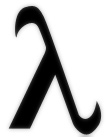
Pythagoras theory of an octave
Pythagoras
In a message dated 3/17/02 11:58:31 AM, gulmer@english.ufl.edu
writes:
Re: Y Architecture?
<< yes, good: we should exploit the link between the Pythagorean Y and
contemporary chaos theory, the latter including biforcation points when a
state changes (catastrophe). WTC has a Y in it (is spelled with a silent
Y), or it should be (a bifurcation point).
Greg>>

Pythagoras
theory of an octave
Music
"Pythagoras (6th C. B.C.) observed that when the
blacksmith struck his anvil, different notes were produced
according to the weight of the hammer.
Number (in this case "amount of weight") seemed to govern musical
tone. . . . .
If you have something like SoundMachine that can
play sound (.av), you can pluck the strings to hear
the notes: the sounds may take some seconds to
reach you but each is under 22K....See if you can
hear the sound in your imagination before it comes,
by judging from the proportions of the string
lengths (the first one's easy.....)
Further, he observed that if you take two strings in the same
degree of
tension, and then divide one of them exactly in half, when they are
plucked the pitch of the shorter string is exactly one octave higher
than the longer"
"Thus to have established the relationship between music and space/number fired the imagination of the Pythagorians and was taken up especially bythe School of Plato and the subsequent Neo-Platonists. Pythagoras himself wrote nothing which has survived, and so it is the Platonists we have to thank for recording and developing what had hitherto been passed down through two hundred and fifty years of oral tradition.
Pythagoras taught that each of the seven planets produced by its orbit a particular note according to its distance from the still centre which was the Earth. The distance in each case was like the subdivisions of the string refered to above. This is what was called Musica Mundana, which is usually translated as Music of the Spheres. The sound produced is so exquisite and rarified that our ordinary ears are unable to hear it. It is the Cosmic Music which, according to Philo of Alexandria, Moses had heard when he recieved the Tablets on Mount Sinai, and which St Augustine believed men hear on the point of death, revealing to them the highest reality of the Cosmos. (Carlo Bertelli, Piero della Francesca, p. 60.) This music is present everywhere and governs all temporal cycles, such as the seasons, biological cycles, and all the rhythms of nature. Together with its underlying mathematical laws of proportion it is the sound of the harmony of the created being of the universe, the harmony of what Plato called the "one visible living being, containing within itself all living beings of the same natural order".
For the Pythagorians different musical modes have different effects on the person who hears them; Pythagoras once cured a youth of his drunkenness by prescribing a melody in the Hypophrygian mode in spondaic rhythm. Apparently the Phrygian mode would have had the opposite effect and would have overexcited him. At the healing centers of Asclepieion at Pergamum and Epidauros in Greece, patients underwent therapy accompanied by music. The Roman statesman, philosopher and mathematician, Boethius (480-524 A.D.) explained that the soul and the body are subject to the same laws of proportion that govern music and the cosmos itself. We are happiest when we conform to these laws because "we love similarity, but hate and resent dissimilarity". (De Institutione Musica, 1,1. from Umberto Eco, Art and Beauty in the Middle Ages. p. 31)."
Thr
Triangle
"(ii) The theorem of Pythagoras - for a right angled triangle the square
on the hypotenuse is equal to the sum of the squares on the other two sides.
We should note here that to Pythagoras the square on the hypotenuse would certainly
not be thought of as a number multiplied by itself, but rather as a geometrical
square constructed on the side. To say that the sum of two squares is equal
to a third square meant that the two squares could be cut up and reassembled
to form a square identical to the third square."
i. Pythagorean triangle and Pythagorean
triads :
If a,b,c are sides of a right-angled triangle ABC and AC is the hypotenuse of
ABC then according to Pythagoras
theorem c2 = a2 + b2. The triangle ABC is known as Pythagorean triangle. The
triad of positive integers (a,b,c)
satisfying the relation c2=a2 + b2 is called the Pythagorean triad of numbers.
About fifteen such triads were
previously known like (3,4,5), (5,12,13), (7,24,25), (9,12,15), (15,36,39).
It is believed that Pythagoras himself
discovered the formula for determining triads of numbers satisfying the relation
c2 = a2+b2.
"Pythagoras of Samos is often described as the first pure mathematician. He is an extremely important figure in the development of mathematics yet we know relatively little about his mathematical achievements. Unlike many later Greek mathematicians, where at least we have some of the books which they wrote, we have nothing of Pythagoras's writings. The society which he led, half religious and half scientific, followed a code of secrecy which certainly means that today Pythagoras is a mysterious figure."
(Another consonance which the Greeks recognised was the octave
plus a fifth,
where 9:18 = 1:2, an octave, and 18:27 = 2:3, a fifth;)
This triangular figure of numbers in the shape of the Greek letter Lamda
is the
Tetrad of the Pythagorians.As was discussed by Plato in his dissertation on
the Composition of the Soul, it is a set of numbers whose relationships with
each other seemed to summarize
all the inter-dependent harmonies within the universe of space and time.
